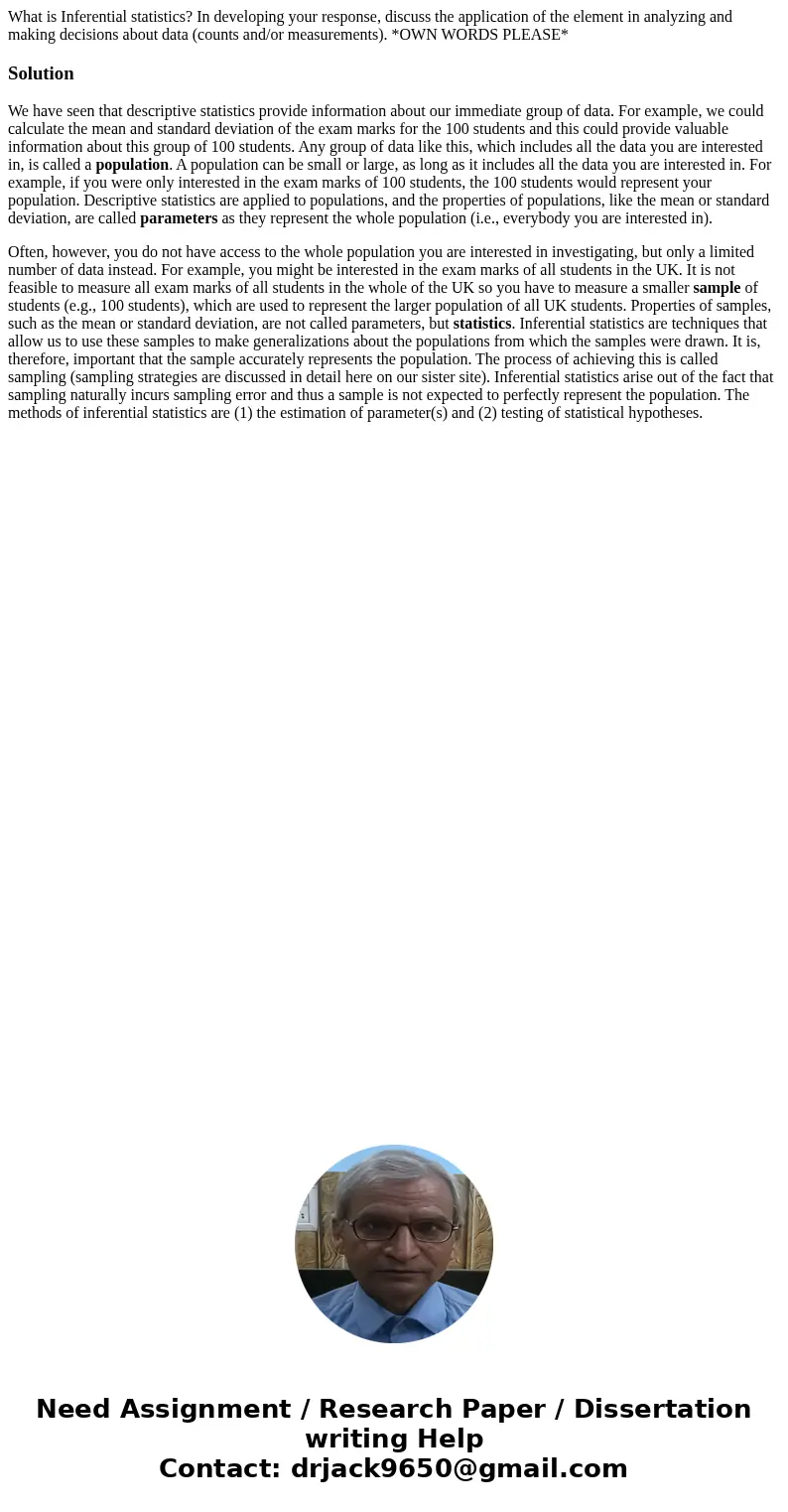What is Inferential statistics In developing your response d
What is Inferential statistics? In developing your response, discuss the application of the element in analyzing and making decisions about data (counts and/or measurements). *OWN WORDS PLEASE*
Solution
We have seen that descriptive statistics provide information about our immediate group of data. For example, we could calculate the mean and standard deviation of the exam marks for the 100 students and this could provide valuable information about this group of 100 students. Any group of data like this, which includes all the data you are interested in, is called a population. A population can be small or large, as long as it includes all the data you are interested in. For example, if you were only interested in the exam marks of 100 students, the 100 students would represent your population. Descriptive statistics are applied to populations, and the properties of populations, like the mean or standard deviation, are called parameters as they represent the whole population (i.e., everybody you are interested in).
Often, however, you do not have access to the whole population you are interested in investigating, but only a limited number of data instead. For example, you might be interested in the exam marks of all students in the UK. It is not feasible to measure all exam marks of all students in the whole of the UK so you have to measure a smaller sample of students (e.g., 100 students), which are used to represent the larger population of all UK students. Properties of samples, such as the mean or standard deviation, are not called parameters, but statistics. Inferential statistics are techniques that allow us to use these samples to make generalizations about the populations from which the samples were drawn. It is, therefore, important that the sample accurately represents the population. The process of achieving this is called sampling (sampling strategies are discussed in detail here on our sister site). Inferential statistics arise out of the fact that sampling naturally incurs sampling error and thus a sample is not expected to perfectly represent the population. The methods of inferential statistics are (1) the estimation of parameter(s) and (2) testing of statistical hypotheses.

 Homework Sourse
Homework Sourse